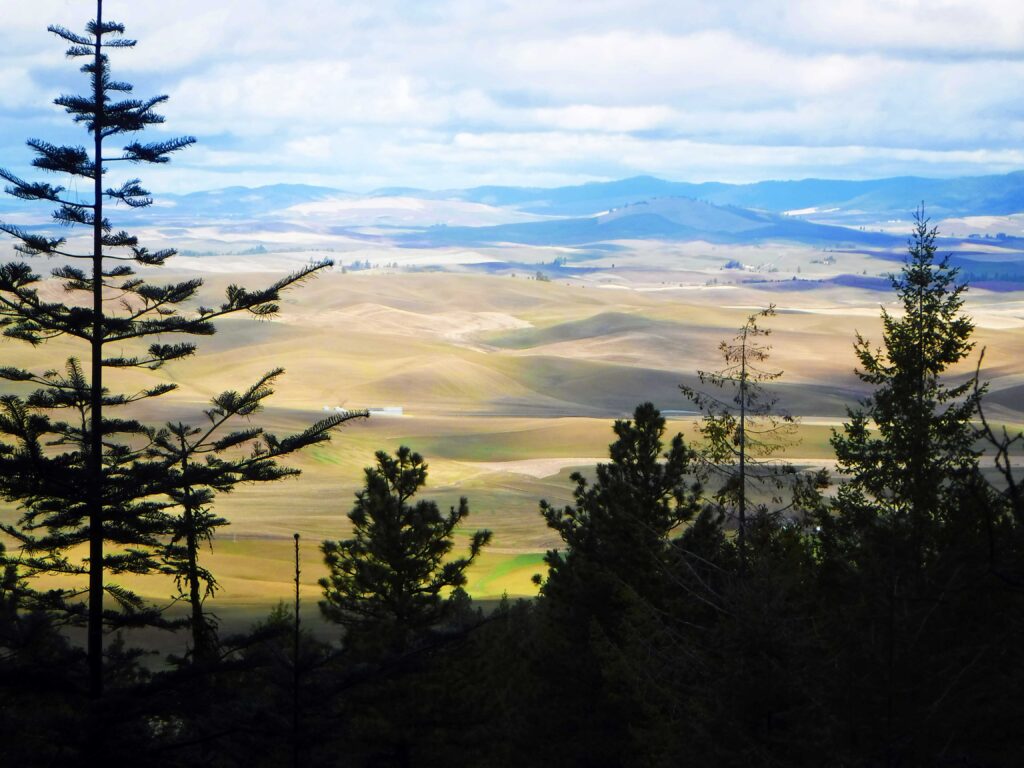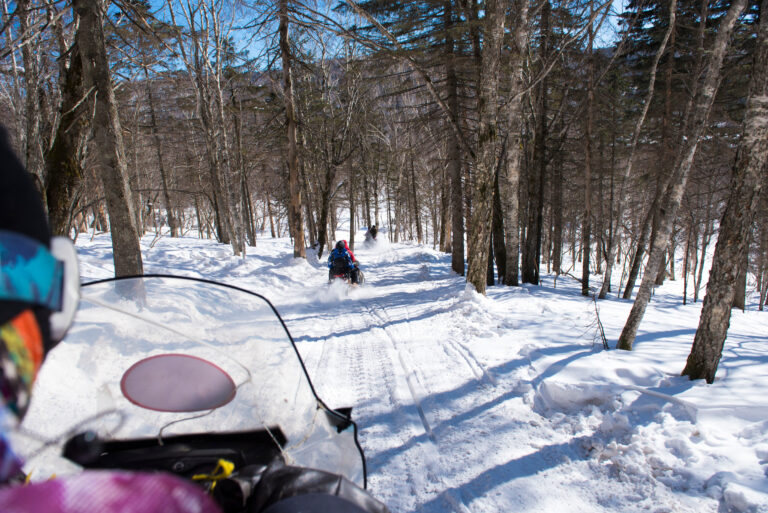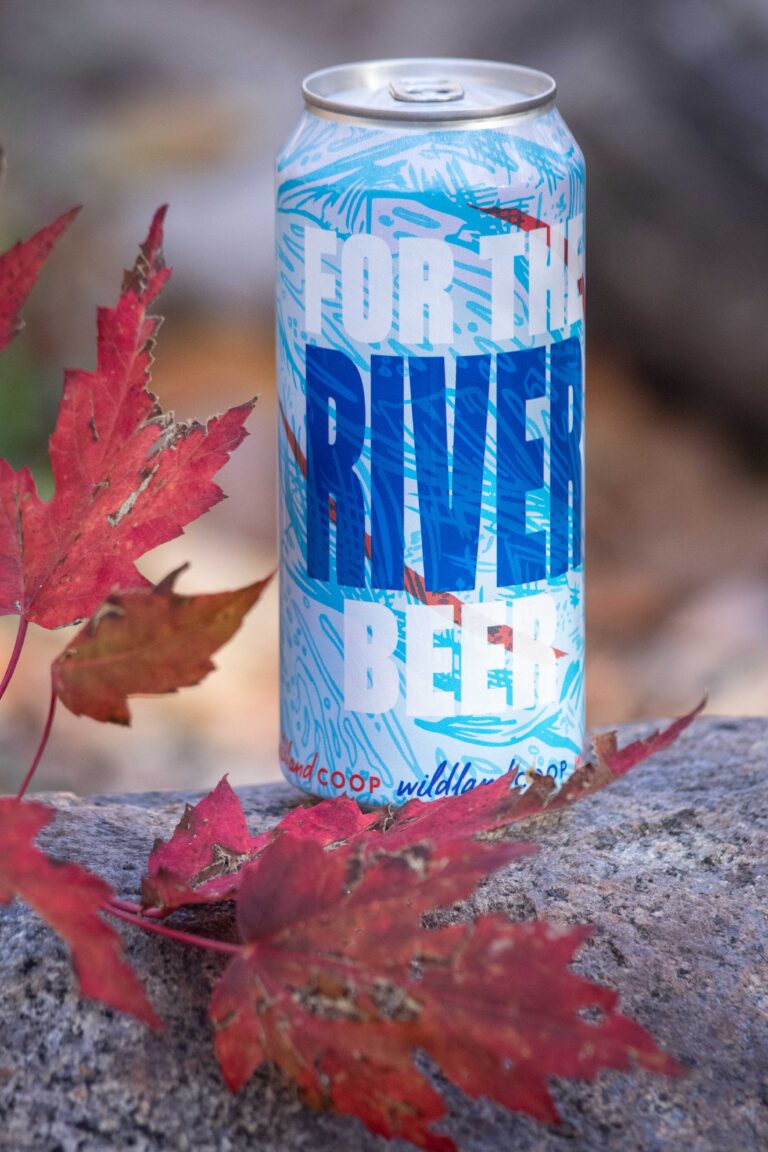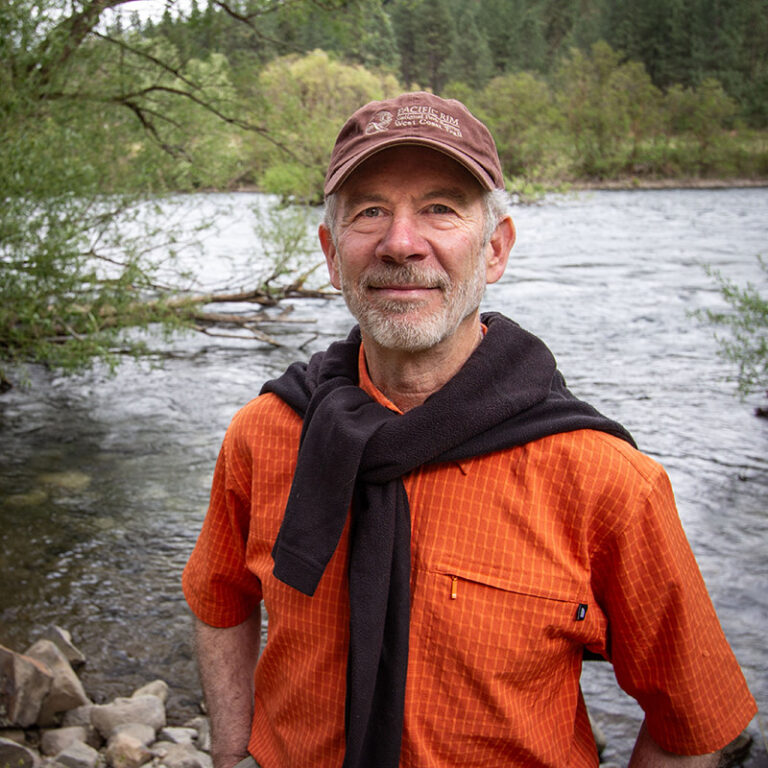Cyclists need room to wander. The sound of the road beneath their tires, the grade of a trail and slight ascend is what fuels them to go on. It’s this achy-stomach sort of desire that pushes riders to the most obscure roads and isolated tracks that any person can take their legs and two wheels. But for most, the aesthetic, the look, feel and smell of the ride, is just as important as the miles they put in and the pace of their journey.
If you haven’t ridden the Palouse, you haven’t experienced the more majestic trails the region truly has to offer. The Palouse puts the phrase Big Sky Montana to shame. In the Palouse, skies are blue as far as the eye can see, fields change color almost as quickly as the direction of the wind and the roads are endless. In this pastoral landscape, miles are measured in wheat fields, 70-mile loops are easily accessible, and there’s no such thing as traffic.
Undiscovered Gem
“Nine out of ten people we talk to say they ride the Palouse,” says Geoff Forshag, co-owner of Two Wheel Transit. “It’s like people that know the loop up around Greenbluff, it’s localized knowledge and information.”
Before cycling found its rebirth in Spokane, it was difficult to find a club or group to ride with. The cycling community was segregated (it still kind of is), and places like the Palouse remained on a need-to-know basis, hidden to large pockets of riders.
“Just a few years ago, you either knew something or you didn’t,” says Gage Stromberg, Two Wheel Transit team member. “You were either shown a new place to ride or you weren’t. Nowadays it’s a little easier. If you start digging around you can find a bike club, racing group or shop ride to go out with.”
If you’re looking for information, the hard and fast rule is head to a bike shop. “Bike shops hear about all the new trails, road conditions and get information quickly if there’s something that might impede your ride,” Forshag says. The next step is to get out and ride. There’s no better way to meet like-minded cyclists or discover new trails than by putting some quality time in the saddle.
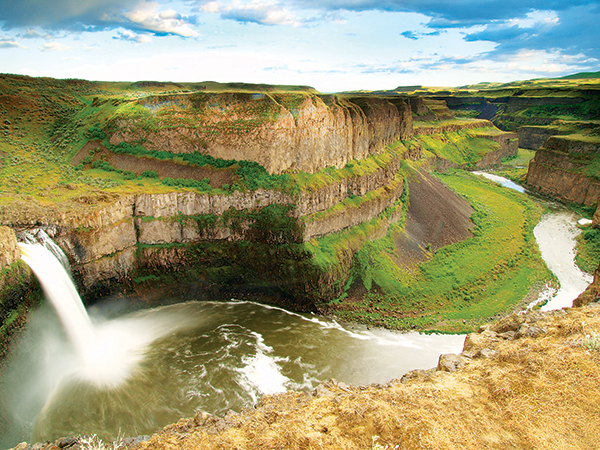
Before You Go
Spokane cyclist Cyrus McLean sits with his legs crossed at The Scoop, studying a map of Spokane and Whitman County. He follows the routes and contour lines meticulously with fingers. There’s a confident familiarity he shares with these roads. He’s traveled here before both on and off his map.
“If someone was new to the area or relatively new to biking, the Palouse is one of the first places I would tell them to try,” McLean says. The recreational rider says he was cycling long before it was cool and frequently takes his custom built Davidson road bike along the hilly paths of the Palouse.
The relativity treeless landscape is scattered with farmland, a few one-horse towns and blessed with mild weather. “It’s beautiful in the spring, summer, fall and early winter,” McLean said. “There are tons of routes and because of the way the roads connect it’s easy to ride 50 to 80 miles without repeating yourself out there. It’s also not even unusual to ride 15 to 20 minutes without encountering another car or person.”
The various reasons that make the Palouse a desirable place to ride, are the same reasons that cause cyclists to heed precaution. The interconnecting roadways and similar landscape makes it a little bit easier to get lost. Before you go, review a map. “As long as you stay on the pavement you can’t go wrong,” McLean says. “You’re not going to get horribly lost but don’t ride by yourself at first.”
The country roads are clearly marked, so a little bit of work with a map, any reasonable road map of Spokane and Whitman County, will help. Study it, make a copy, put it in you’re GPS, whatever, and bring it along.
Bring lots of water. Summertime and early fall in the Palouse is hot and 60-50 mile rides require more water than usual. Use your map and be familiar with the next nearest town. “Even little towns that don’t have anything going on have parks and gas stations to fill up your water and refuel,” McLean says.
For the most part, the paved roads are chip-sealed and in great condition. You’ll be safe with even the thinnest of road tires, but a course on complete bicycle mechanics and a proper tool bag will benefit you before you go. Let’s face it, only knowing how to change a flat isn’t good enough when the next nearest town is 20 miles away. A bicycle mechanic course at Pedals 2 People or REI will get you ready for longer treks.
Sensuous Hills & Pounding Pavement
The inside walls of Two Wheel Transit are covered in bicycle rims, shoes, pedals and helmets. In here, water bottles hang like wind chimes from the ceiling and Two Wheel Transit team member Andrei Mylroie has just gotten back from a Thursday night shop ride.
If all you did was ride the Palouse, you might get tired of wheat fields. But as with most things, if done in moderation, the topography and road conditions will astound you. “People come from all over the world to photograph the Palouse,” says Andrei Mylroie, Two Wheel Transit team member. “It’s so beautiful and so different throughout different times of the year. It’s hyper green in the spring, yellow in autumn and fall, and overexposed in the winter.”
So there’s the sensual side of things. The ride is pretty and you’ll enjoy the views. But it might also kick your butt into shape. Those picturesque rolling hills translate into rolling country roads and the treeless landscape is prone to wind. Without a doubt, the Palouse is the best place for roadies who want to climb.
“The roads are in good condition and it’s honest-to-God rolling up and down all the time,” Mylroie says. “And out there you see more animals than people.” Aside from the occasional tractor, traffic is exceptionally light and there’s no need to shy away from the highway. There’s plenty of shoulder room for both you and oncoming vehicles.
The hilly conditions and lack of traffic have slowly begun to catch the attention of race promoters. USA Cycling Club Spokane Rocket Velo has hosted three Palouse rides alone this year. The Cheney Rock Lake Road Race was held June 20 as host race of the 2010 Elite State Championships. A few months prior, the Ronde van Palouse road race, a 23-mile circuit near Spangle, was held.
“The Ronde van Palouse was horrendous,” Mylroie says. “It was a very, very difficult course. But it was fantastic.” The 29-mile Liberty Lake Road Races were held May 25 and August 3, and were a bit more manageable. “It was all classic Palouse riding,” Mylroie says. “Up and down all the time, a little bit of wind and fantastic roads.”
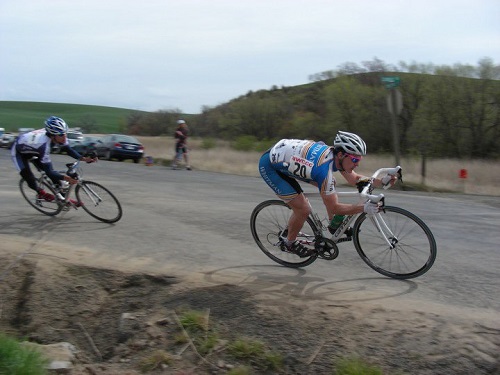
Mellow Mondays & Tandem Tuesdays
Bill Bender formed a different kind bicycle group in the late 1980s to get in of a little road time before work. The route is now known as The Morning Ride and cyclists meet every weekday at 5:30AM. At the South Hill’s Pittsburg Street and Avenue 30th (near the Mormon Church) for a 20-mile ride around the outskirts of the Palouse.
“We consistently have six to ten riders everyday,” says Paul Main, Two Wheel Transit team member. “We try to stick to our themes but it’s a little lax.” Mellow Monday is supposed to be a relaxed ride, as everyone has just ridden hard over the weekend.
Tandem Tuesday mixes up the pace and wacky Wednesday takes cyclists on a different loop. Thrashing Thursday is a fight to the finish and Fast Friday is a flat out sprint. “A lot of the riders are fast,” Main says. “It’s kind of turned out into a competitive, spirited group ride.”
If you’re looking for a social ride without the competition, check out the Spokane Bike Club. The group meets regularly at a restaurant called the Harvester, off the Pullman Highway in Spangle. “It defies the phrase location, location, location, because it’s nowhere, nowhere, nowhere,” McLean says. “But it’s busy all the time and bicycle-friendly. Once you get out of that little burg you’re in the country.”
Off the Beaten Path
Spokane native David Blaine started riding the Palouse in 1982. His favorite rides included treks though Rockford, Valley Ford, Spangle, and Latah. He loved the big loops, low traffic and hilly landscape, but grew tired of pavement all together. This long-time roadie turned mountain biker and became enamored with dirt.
“The only reason I got into the dirt was I got into a different type of racing,” he says. “I had to prepare for hour after hour of hands vibrating on handles, but I really enjoyed it. It was new and really fresh. Nowadays I use roads to get places, but when I want to enjoy the ride I get on the dirt.”
The dirt roads are in excellent condition, comprised of compact dirt and loose gravel. The roads get a bit washboard during the wet seasons but are still accessible 12 months out of the year. That doesn’t mean they’re being ridden.
“I never see people riding the dirt roads,” Blaine says. “It’s just me, the dogs and the animals. I spent all day on my mountain bike doing 80 mile rides at 10 miles per hour. I think fewer people appreciate slogging along at low speeds for hours and hours.” The chef by day found himself riding at night partly to avoid the hottest part of the day, and partly to accommodate restaurant hours.
His rides lead to the development of a 100-mile dirt race through the Palouse that found a following amongst Spokane’s most extreme riders. Perhaps a few riders too many for the creator’s liking. “I changed the route and made it more dirt-oriented,” Blaine says. “I tried to add an extra element of evil to it so people would take it a little more seriously.”
The route is called The Midnight Century Ride and once a year at midnight, a select few take on the grueling 100-mile endeavor. “The new route is several different loops I used to do,” he says. “I put them together into one monstrous ride and it’s not something you should do often.”
John Speare, Spokane’s prolific bicycle spokesperson, is a Midnight Century Rider, and avid dirt road cyclist. Despite popular opinion, Spear says the dirt roads are just as easy to navigate as the paved because everything lies on a grid. You always know you’re going to pop out at some point, he said.
There are some cool dirt roads with great climbs and long rides,” he continues. “It’s always a surprise when I see trees, rock formations, cool old structures, horses and the history of these old towns,” he adds. “Riding dirt is getting off that beaten path and it just feels like it’s one more step removed, the pace is just more charming.”
Speare understands that it all sounds a bit cheesy. But he doesn’t care because it’s true. He simply prefers dirt roads and there’s nothing he can say or do that will convince the throngs of roadies to stray off the beaten path.
“Some folks who ride are really about mileage and speed,” he says. “Their goal is about fitness, but I ride because it’s fun. Part of the fun of being on a bike is the exploring.”
Whether you stick with the pavement or dive into gravel, it doesn’t really matter. Just wander. The Palouse has enough roads, loops and meandering scenery to keep you occupied for miles.
THE RIDES
Valley-Chapel via Rockford
Contributed by Cyrus McLean. Although the ride varies by cyclist, this ride is the most popular among riders. It showcases the scenery, climbs and roads of the Palouse.
From the vicinity of 57th and Regal (Zip Trip, Albertsons) head South on Regal. Left on 65th (0.05 miles), right on Waneta (1.0 miles), right on Palouse Highway (1.3 miles), right on Valley-Chapel (4.2 miles), cross creek, begin on mile climb (9.6 miles), pass Mount Hope Church/Cemetery and continue on Valley-Chapel (15.2 miles), sort of a Y, continue left on Valley-Chapel (Jackson will be the right fork) (18.0 miles), left on Highway 27 (Rockford will be on your right in 1/4 mile) (20.1 miles), pass through Freeman (26.5 miles), left on Palouse Highway toward Valleyford (29.1 miles), left on 57th (37.8 miles).
Spangle-Waverly Loop
Contributed by Cyrus McLean. This is a somewhat challenging route with lots of the ups-and-downs one would expect of The Palouse.
Starting from The Harvester in Spangle (19 miles south of Spokane on Highway 195), go east two blocks, then right on Old Highway 195 and left on Spangle-Waverly Road in 1/2 mile. (Pass through Upper Columbia Academy). Continue approximately 10 miles, then take a right at the Y into Waverly. (Water and Port-A-Potty available in the city park) Continue through Waverly and take a right on Prairie View Road after crossing
the concrete bridge. At approximately 19 miles make a right on Old Highway 195.
Paradise-Spangle Loop
Contributed by Cyrus McLean. The route takes you through the sparse pine forest and scablands that make up the northern margin of The Palouse. It is shorter and less hilly than other routes. The highway shoulder is wide, clean and quite safe.
From the intersection of Highway 195 and Paradise Road (13 miles south of Spokane – “wide spot” parking both east and west of 195), head west on Paradise, left on Anderson Road (2.3 miles), left on Curtis Road (3.3 miles), left on Cheney-Spangle Road (8.7 miles), bear left at the Y (14.5 miles), Cheney-Spangle Road makes a hard left (17.5 miles), left on Highway 195 (20.3 miles), you are back to Paradise Road (26.5 miles).
Morning Ride
Contributed by Paul Main. A 20-mile ride around the outskirts of the Palouse.
Starting at Pittsburg and 30th, Head south on Pittsburgh, left on 35th (.32 mile), take a right on Crestline (.58 mile), left on 63rd (2.39 mile), right on Regal (2.88 mile), left on 65th (3.0 mile), right on Wanita (3.64 mile) and a right onto the Old Palouse Highway (3.97 mile). From there take a right on Baltimore (5.66 mile) which turns into Hangman Valley Road (7.89 mile), turn right on Hatch Road (12.49 mile), left on High Drive Road (14.75 mile), right on Grand Ave (14.89 mile), right on 29th (15.82 mile), continue on 29th back to Pittsburg at the start (16.63 mile).
Fish Lake to Palouse Loop
Portions of the route contributed by Gage Stromberg. It’s a nice connector route to the Palouse because it utilizes the newly refinished Fish Lake Trail.
Take the new Fish Lake Trail from Sunset Blvd to Scribner Road (7.73 mile), make a right, go left on Cheney Hwy. It is very safe with a wide shoulder. Go left on Myers Park Road (10.54 mile), get on old Fish Lake Trail (follow signs to trail head, where big steam shovel is on Cheney road) when second portion ends by Cheney Make a left on Cheney-Spangle Road (14.4 mile), as Cheney Spangle Road turns into S. Wells Road (20.55 mile), continue on S. Wells, make a left on S. Cheney Plaza Road (28.47 mile), make a left on 195 at (33.33 mile) and loop around through Spangle to make a left on S Inland Empire Way (59.33 mile). Make a left on Sunset Blvd back to the starting point (59.8 mile)
Midnight Century Ride
Contributed by David Blaine. It’s meant to be hard, it’s on solid dirt roads and it’s not for the faint of heart. Only experienced cyclists should take on the 8 to 10 hour endeavor. Portions of the 100 mile journey do make for a good day trip.
For the most up-to-date Midnight Century information, visit midnightcentury.com. Find a route map and coordinates at ridewithgps.com.
Originally published in the September 2010 print issue (updated April 2021).
